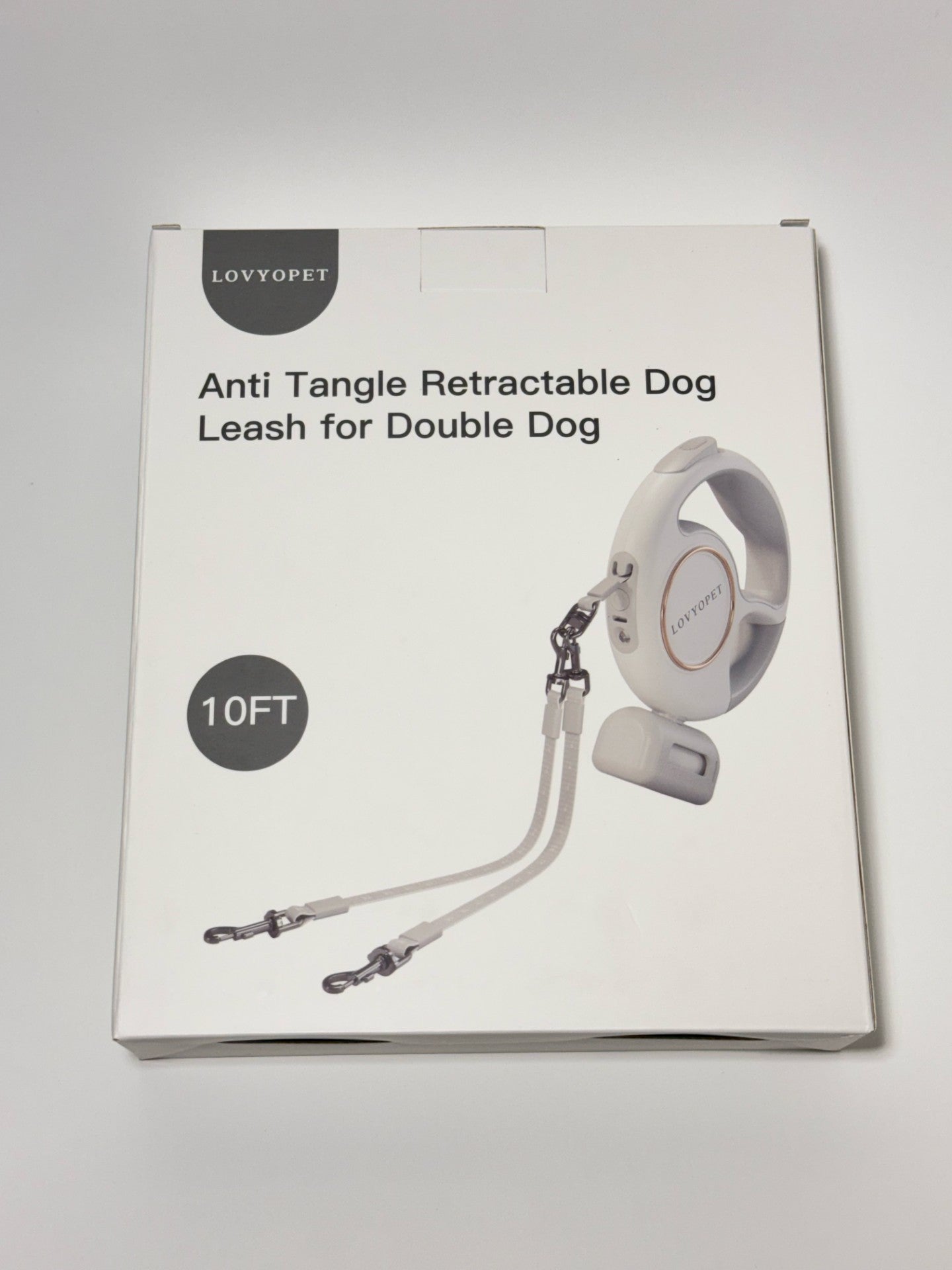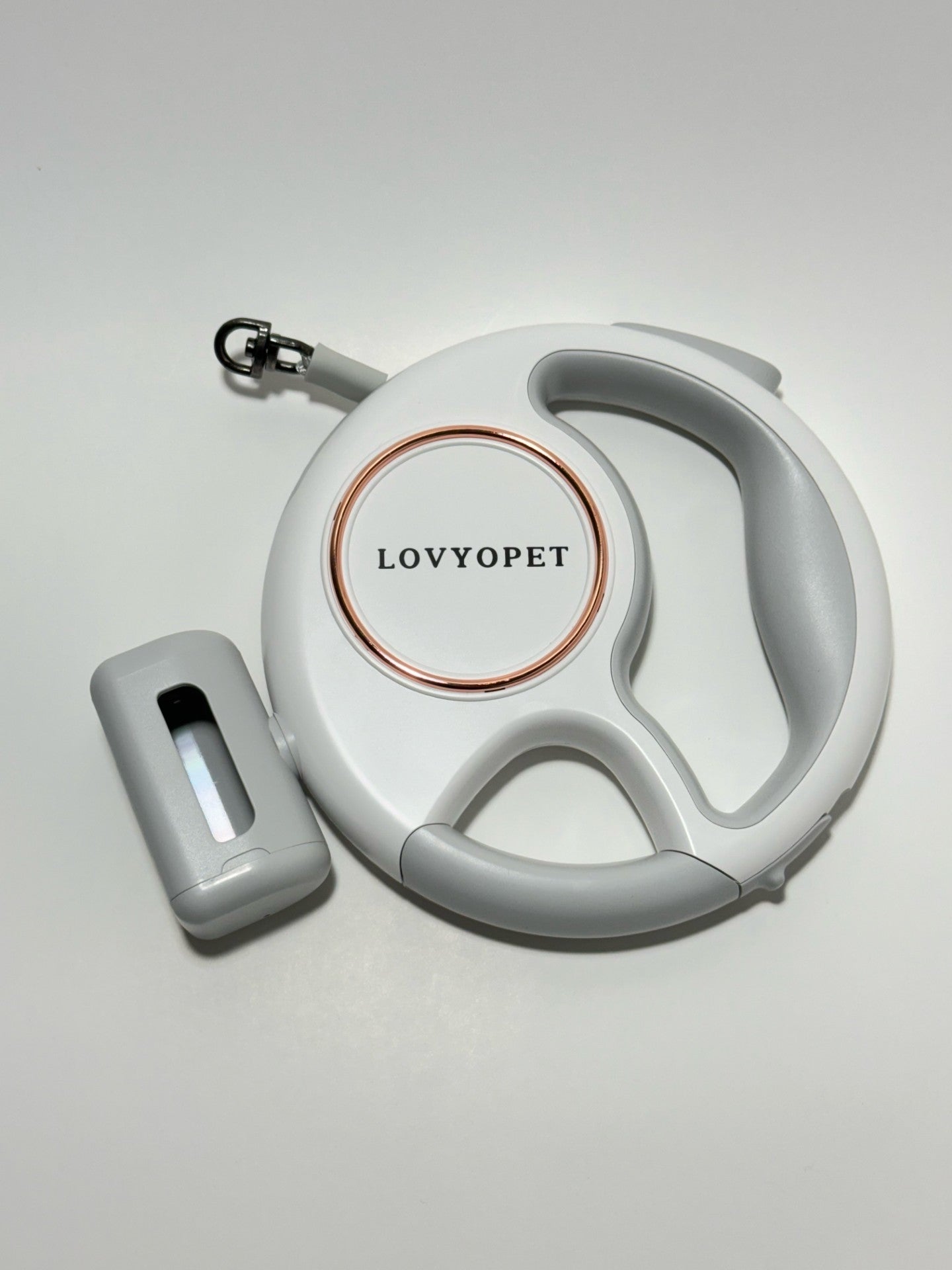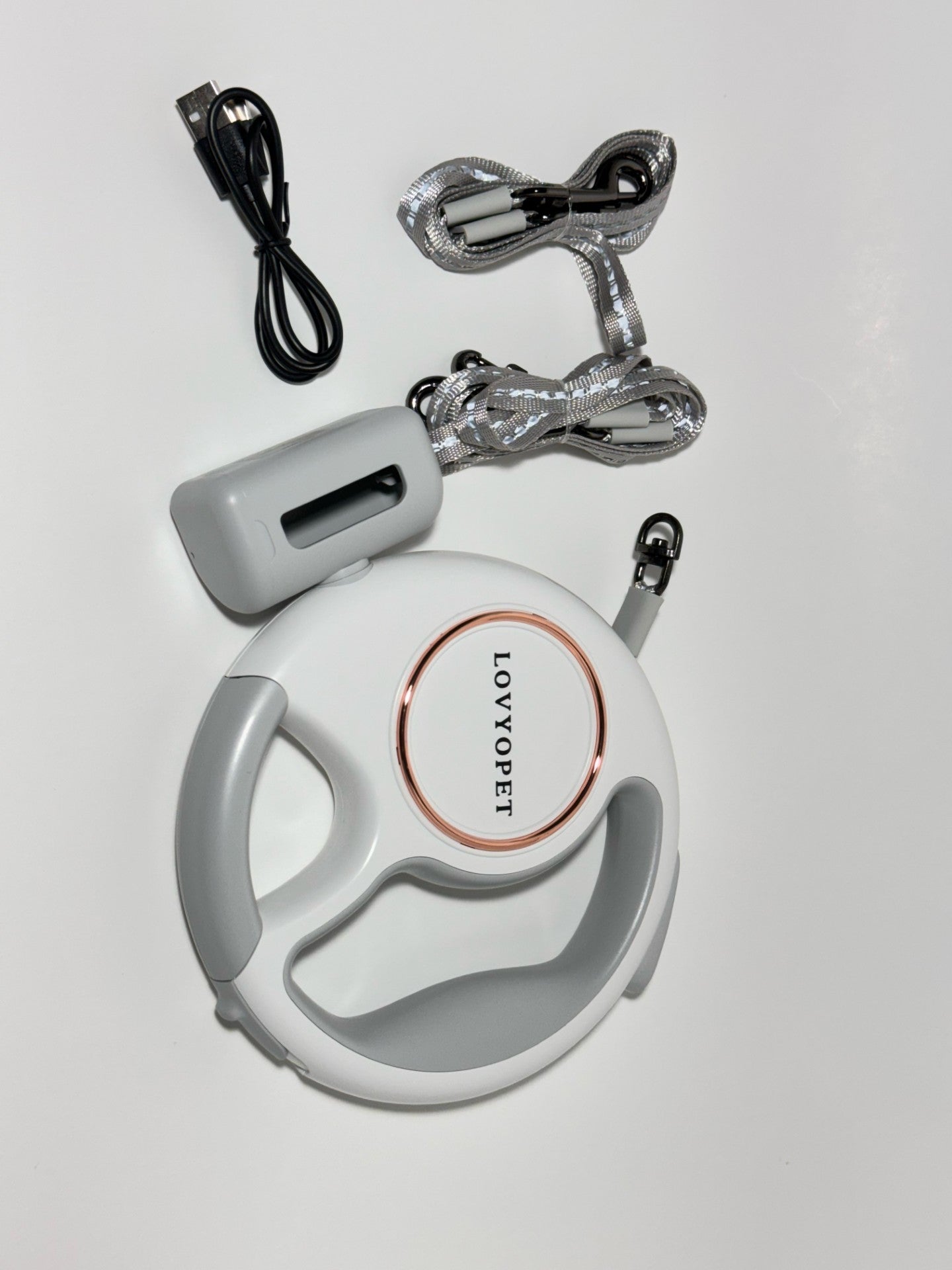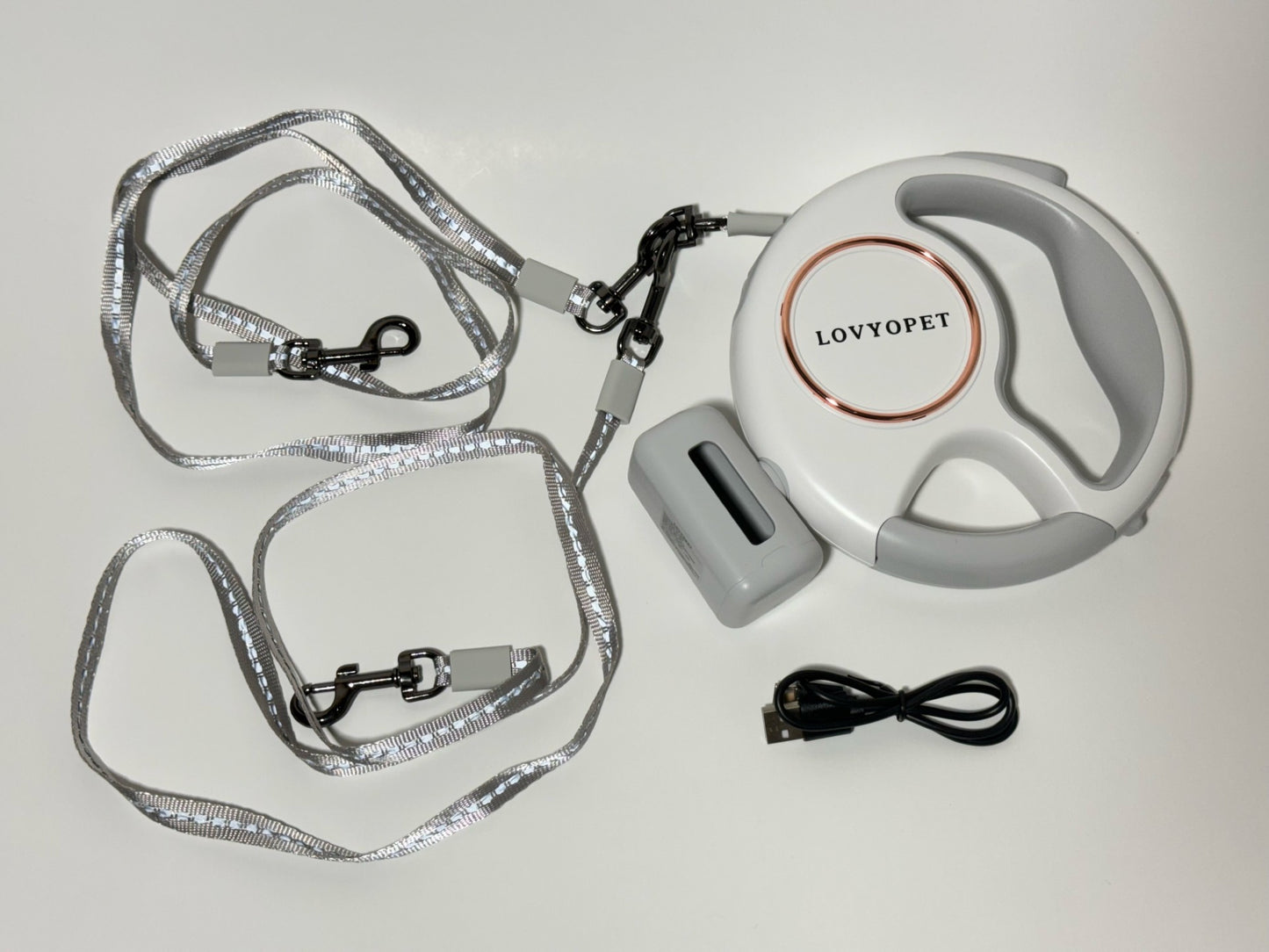LovYoPet
Retractable Dog Leash for Double Dog (Small Dogs)
Retractable Dog Leash for Double Dog (Small Dogs)
Couldn't load pickup availability
Safety Data Sheet (SDS)
According to OSHA Hazard Communication Standard 29 CFR 1910.1200, GHS format
Section 1 – Identification
Product Name: Rechargeable Lithium-Ion Battery Cell
Model: 3.7 V, 500 mAh (~1.85 Wh)
Recommended Use: Portable electronic devices, power storage
Manufacturer: (Insert your company name & address)
Emergency Phone Number: (Insert 24-hour number)
Date Prepared: (Insert date)
Section 2 – Hazard Identification
Classification (GHS-US):
-
Flammable solid (Category 2 – if damaged)
-
Acute toxicity (oral, dermal, inhalation) – Not classified in normal use
-
Skin irritation (Category 2) – if electrolyte contacts skin
-
Eye irritation (Category 2A) – if electrolyte contacts eyes
Signal Word: Danger
Hazard Statements:
-
May cause fire or explosion if damaged or mishandled.
-
Contents may cause skin and eye irritation.
-
Harmful if swallowed or inhaled in case of cell rupture.
Precautionary Statements:
-
Keep away from heat, sparks, open flames, and hot surfaces.
-
Do not puncture, crush, or disassemble.
-
Avoid direct contact with contents.
-
Store in a cool, dry, well-ventilated area.
Pictograms: 🔥 ⚠️
Section 3 – Composition / Information on Ingredients
| Component | CAS Number | Approx. % by Weight |
|---|---|---|
| Lithium cobalt oxide (LiCoO₂) | 12190-79-3 | 25–40% |
| Graphite | 7782-42-5 | 10–20% |
| Organic electrolyte (ethylene carbonate, dimethyl carbonate, lithium hexafluorophosphate) | Mixture | 10–15% |
| Copper foil | 7440-50-8 | 5–10% |
| Aluminum foil | 7429-90-5 | 5–10% |
| Binder, separator, others | N/A | Remainder |
Section 4 – First-Aid Measures
Eye Contact: Rinse immediately with plenty of water for at least 15 minutes. Seek medical attention.
Skin Contact: Wash with soap and water. Remove contaminated clothing. Seek medical attention if irritation persists.
Inhalation: Move to fresh air. If breathing is difficult, give oxygen and get medical help.
Ingestion: Do not induce vomiting. Rinse mouth and seek immediate medical attention.
Section 5 – Fire-Fighting Measures
Suitable Extinguishing Media: Dry chemical, CO₂, foam, water spray (small fires).
Unsuitable: Do not use a strong water jet directly on battery.
Special Hazards: Battery may vent toxic gases (HF, CO, CO₂) when burning.
Protective Equipment: Wear self-contained breathing apparatus and full protective gear.
Section 6 – Accidental Release Measures
-
If battery is damaged and leaking, avoid contact with contents.
-
Use protective gloves, goggles, and ventilate area.
-
Place damaged cells in a non-conductive, fireproof container. Dispose of according to local regulations.
Section 7 – Handling and Storage
-
Handle with care; do not drop or crush.
-
Keep away from heat sources and direct sunlight.
-
Store at 20 ± 5 °C in a dry, ventilated area.
-
Do not store with conductive materials or flammable substances.
Section 8 – Exposure Controls / Personal Protection
-
Normal Use: No special PPE required.
-
Damaged Battery: Use chemical-resistant gloves, safety goggles, and respirator.
-
Ensure adequate ventilation.
Section 9 – Physical and Chemical Properties
| Property | Value |
|---|---|
| Appearance | Solid, sealed cell |
| Odor | Odorless (sealed) |
| Nominal Voltage | 3.7 V |
| Capacity | 500 mAh |
| Watt-hour rating | ~1.85 Wh |
| Boiling Point | Not applicable |
| Melting Point | Not applicable |
| Solubility | Insoluble in water (sealed) |
| Flash Point | Not applicable (sealed) |
Section 10 – Stability and Reactivity
-
Stable under normal storage and handling.
-
Avoid high temperature, open flames, puncturing, or crushing.
-
Hazardous decomposition products: HF, CO, CO₂, and other toxic gases when burning.
Section 11 – Toxicological Information
-
No acute toxicity during normal use.
-
Electrolyte and lithium salts are harmful if swallowed or inhaled.
-
May cause skin and eye irritation upon leakage exposure.
Section 12 – Ecological Information
-
No environmental hazard under normal use.
-
Leaked contents may be toxic to aquatic life.
-
Do not dispose into waterways.
Section 13 – Disposal Considerations
-
Dispose in accordance with local, regional, and national laws.
-
Do not incinerate.
-
Send to certified battery recycler.
Section 14 – Transport Information
-
UN Number: UN 3480 (Lithium-ion batteries) / UN 3481 (contained in equipment)
-
Class: 9 (Miscellaneous Dangerous Goods)
-
Packing Group: Not assigned
-
Shipping Name: Lithium-ion batteries
-
Special Precautions: Follow IATA, IMDG, DOT regulations.
Section 15 – Regulatory Information
-
OSHA Hazard Communication Standard: Not classified as hazardous in sealed form.
-
TSCA: Components listed.
-
EPA: Not a hazardous waste in intact form.
Share







